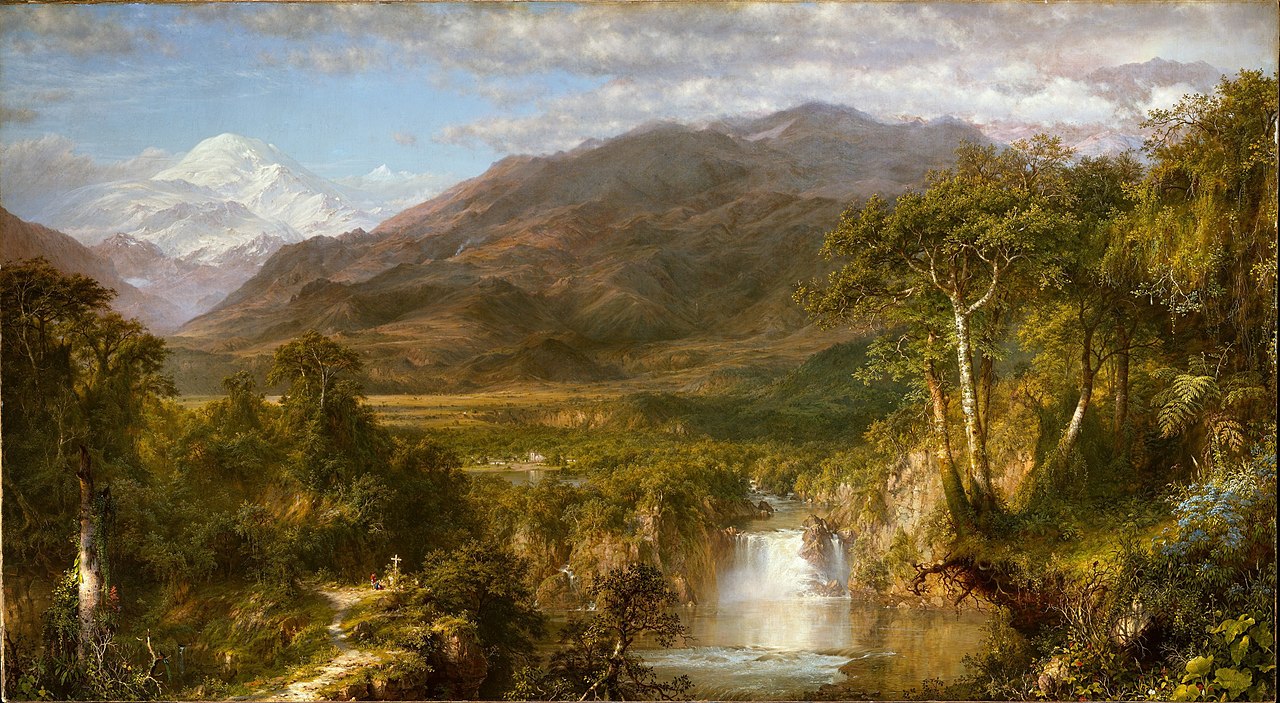
Three meters wide, Frederic Edwin Church’s 1859 painting The Heart of the Andes was the IMAX feature of its day: On its debut in New York, 12,000 people waited in line for hours to pay 25 cents for a look at the canvas, which was displayed between theatrical curtains. One witness wrote, “Women felt faint. Both men and women succumb[ed] to the dizzying combination of terror and vertigo that they recognize[d] as the sublime. Many of them will later describe a sensation of becoming immersed in, or absorbed by, this painting, whose dimensions, presentation, and subject matter speak of the divine power of nature.” Mark Twain raved to his brother:
I have just returned from a visit to the most wonderfully beautiful painting which this city has ever seen — Church’s ‘Heart of the Andes’ … I have seen it several times, but it is always a new picture — totally new — you seem to see nothing the second time which you saw the first. We took the opera glass, and examined its beauties minutely, for the naked eye cannot discern the little wayside flowers, and soft shadows and patches of sunshine, and half-hidden bunches of grass and jets of water which form some of its most enchanting features. There is no slurring of perspective effect about it — the most distant — the minutest object in it has a marked and distinct personality — so that you may count the very leaves on the trees. When you first see the tame, ordinary-looking picture, your first impulse is to turn your back upon it, and say ‘Humbug’ — but your third visit will find your brain gasping and straining with futile efforts to take all the wonder in — and appreciate it in its fulness and understand how such a miracle could have been conceived and executed by human brain and human hands. You will never get tired of looking at the picture, but your reflections — your efforts to grasp an intelligible Something — you hardly know what — will grow so painful that you will have to go away from the thing, in order to obtain relief. You may find relief, but you cannot banish the picture — it remains with you still. It is in my mind now — and the smallest feature could not be removed without my detecting it.
Church had spent two years in South America retracing the steps of Alexander von Humboldt to create a composite of the continent’s topography. He hoped to share it with the explorer himself, but Humboldt died before the painting could reach Europe.
